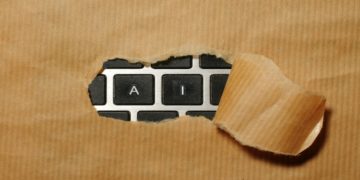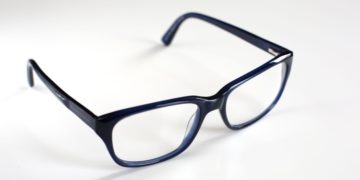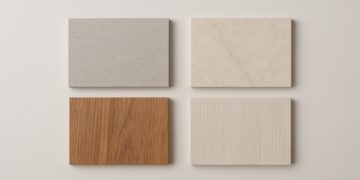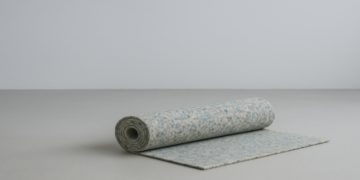We’ve all been there – your glasses start to slip down your nose, sit unevenly on your face or press a little too tightly behind your ears. It’s frustrating, especially if you don’t have time to rush off to the optician. The good news? Many minor frame issues can be easily fixed at home with a bit of patience and care. Before you start bending and tweaking, it’s important to know that not all glasses are created equal. The material, frame style and construction play a significant role in how adjustable your glasses are. In this guide, we’ll walk you through safe and effective ways to adjust your glasses at home – whether they’re metal, plastic or somewhere in between.
Know your frame type before making any adjustments
The first step in adjusting your glasses is understanding the type of frame you’re working with.
- Metal frames are generally more forgiving. They can be adjusted with gentle pressure and are more likely to spring back if you make a slight mistake.
- Plastic frames, on the other hand, are less pliable and can snap if handled too roughly. They often require a bit of heat to make them more flexible.
- Titanium or memory metal frames tend to spring back to their original shape. These are best left to the professionals unless you have experience.
Identifying your frame type helps you determine the safest approach for making changes without causing damage.
What tools do you need to adjust glasses at home?
While most minor tweaks can be done by hand, having the right tools on hand makes the process smoother. Here’s a short list of what you might need:
- A small eyeglass repair screwdriver
- A bowl of warm (not boiling) water
- A clean microfibre cloth
- A hairdryer (for warming up plastic frames)
- Rubber gloves for extra grip
- Tweezers or needle-nose pliers (with a soft grip or wrapped tips)
Always handle your frames gently and make slow, incremental adjustments. Trying to fix everything at once can lead to overcorrection or even breakage.
How to fix glasses that slide down your nose
If your glasses keep slipping, it’s usually because the arms are too wide or the nose pads aren’t sitting properly.
For metal frames with nose pads:
- Gently pinch the nose pads closer together using your fingers or a pair of tweezers.
- Aim to keep the pads symmetrical and only move them a millimetre or two at a time.
- Test the fit frequently to avoid over-tightening, which can cause discomfort.
For plastic frames without nose pads:
- Run the front of the frame under warm water or use a hairdryer on low for about 30 seconds.
- Carefully bend the arms inward so they grip the sides of your head more securely.
- Allow the frame to cool and test the fit.
How to straighten crooked glasses
Uneven glasses are often caused by one arm being bent higher or lower than the other. Here’s how to level them:
- Place the glasses on a flat surface with the lenses facing downward. Both arms should rest evenly.
- If one arm is raised, gently bend it downward at the hinge until both arms are level.
- If one lens sits higher on your face, adjust the opposite arm. For example, if the left lens is higher, bend the right arm downward slightly.
Be sure to test the adjustment on your face after each small change. Tiny tweaks can make a big difference. If they break, you can use the Easy-to-use eyeglass repair kit (containing a screwdriver and screws for securing the glasses)
How to relieve pressure behind the ears
If your glasses are causing discomfort behind your ears, it usually means the arms are too tight or bent at the wrong angle.
- Warm the temple tips with a hairdryer or warm water to make them more pliable.
- Gently straighten the curve at the end of the arm to reduce pressure.
- Alternatively, if the arms are too loose, increase the curve slightly so they hook more snugly around your ears.
You may need to try on your glasses a few times throughout the process to find the sweet spot between comfort and a secure fit.
How to adjust the bridge for a better fit
The bridge of your glasses – the part that rests on your nose – plays a major role in how your frames feel throughout the day.
For glasses with adjustable nose pads:
- Use your fingers to move the pads closer together or further apart to adjust height and pressure.
- If your glasses sit too low, push the pads closer together to lift the frame.
- If they sit too high or dig into your nose, widen the pads slightly.
For plastic frames:
- You can’t adjust the bridge directly, but tightening the arms or fitting non-slip nose pads can improve stability and comfort.
A word of caution: when not to adjust glasses at home
While many minor adjustments are safe to perform yourself, there are situations where it’s better to consult a professional:
- If your frames are made from memory metal or titanium
- If they’re under warranty – self-adjustments may void it
- If the frame is cracked, warped or brittle
- If screws are stripped or missing
Opticians usually offer minor adjustments free of charge, and their experience can save you from costly mistakes.
Final thoughts: confidence in your own hands
Adjusting your glasses at home doesn’t have to be intimidating. With a little knowledge, the right tools and a careful approach, you can improve your comfort and restore the fit of your frames in no time.
Remember: small, deliberate changes are key. Avoid rushing, test frequently, and don’t force anything that resists too much. When in doubt, ask a professional – but you may be surprised at just how much you can do yourself.
It’s not just about making your glasses fit better – it’s about taking ownership of your comfort, your style and your vision. Quite literally.
David Prior
David Prior is the editor of Today News, responsible for the overall editorial strategy. He is an NCTJ-qualified journalist with over 20 years’ experience, and is also editor of the award-winning hyperlocal news title Altrincham Today. His LinkedIn profile is here.













































































